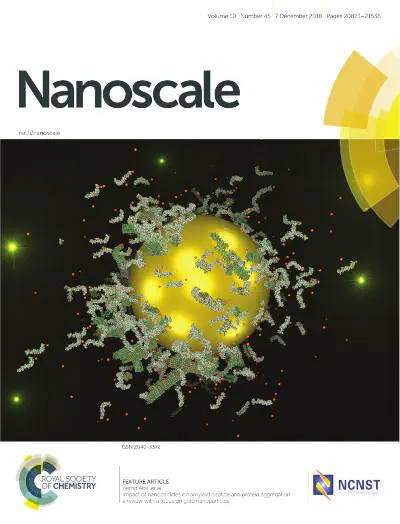Elucidating Mechanisms of Self-Assembly

We explore the principles of peptide self-assembly, focusing on how biomolecules organize in solution and at interfaces like nanoparticles and membranes. We aim to develop predictive models of self-assembly that inform the design of programmable nanomaterials. In particular, we study peptide aggregation and the formation of β-sheet-rich amyloid fibrils, which are associated with age-related diseases.
Related Publications
Yu-Liang Tsai, Primiana Cavallo, Qi Lu, Jiyao Yu, Christopher P Ender, Julian Link, Katrin Amann-Winkel, Kristina Endres, Christopher V Synatschke, Torsten John (2025). Design of the Hydrophobic Core of Self-Assembling Peptide Fibrils for Enhanced Neural Regeneration. Small Science. https://doi.org/10.1002/smsc.202500224
Svenja Weigold, Kerstin Brödner, Torsten John, Jan Freudenberg, Uwe H F Bunz, Tanja Weil, George Fytas, Klaus Müllen (2025). Self‐Assembly of Amphiphilic Polyphenylene Dendrimers with Different Surface Functionalization in Solvent/Non‐Solvent Mixtures. Macromolecular Chemistry and Physics. https://doi.org/10.1002/macp.202400431
Manuel Hayn, Torsten John, Juhaina Bandak, Lena Rauch‐Wirth, Bernd Abel, Jan Münch (2024). Hybrid Materials From Peptide Nanofibrils and Magnetic Beads to Concentrate and Isolate Virus Particles. Advanced Functional Materials. https://doi.org/10.1002/adfm.202316260
Torsten John, Aldo Rampioni, David Poger, Alan E Mark (2024). Molecular Insights into the Dynamics of Amyloid Fibril Growth: Elongation and Lateral Assembly of GNNQQNY Protofibrils. ACS Chemical Neuroscience. https://doi.org/10.1021/acschemneuro.3c00754
Torsten John, Lisandra L Martin, Bernd Abel (2023). Peptide Self‐Assembly into Amyloid Fibrils at Hard and Soft Interfaces – From Corona Formation to Membrane Activity. Macromolecular Bioscience. https://doi.org/10.1002/mabi.202200576
Torsten John, Stefania Piantavigna, Tiara J A Dealey, Bernd Abel, Herre Jelger Risselada, Lisandra L Martin (2023). Lipid oxidation controls peptide self-assembly near membranes through a surface attraction mechanism. Chemical Science. https://doi.org/10.1039/D3SC00159H
Torsten John, Lisandra L Martin, Herre Jelger Risselada, Bernd Abel (2022). Curvature model for nanoparticle size effects on peptide fibril stability and molecular dynamics simulation data. Data in Brief. https://doi.org/10.1016/j.dib.2022.108598
Torsten John, Juliane Adler, Christian Elsner, Johannes Petzold, Martin Krueger, Lisandra L Martin, Daniel Huster, Herre Jelger Risselada, Bernd Abel (2022). Mechanistic insights into the size-dependent effects of nanoparticles on inhibiting and accelerating amyloid fibril formation. Journal of Colloid and Interface Science. https://doi.org/10.1016/j.jcis.2022.04.134
Torsten John, Juhaina Bandak, Nilushiya Sarveson, Claudia Hackl, Herre Jelger Risselada, Andrea Prager, Christian Elsner, Bernd Abel (2020). Growth, Polymorphism, and Spatially Controlled Surface Immobilization of Biotinylated Variants of IAPP 21–27 Fibrils. Biomacromolecules. https://doi.org/10.1021/acs.biomac.9b01466
Torsten John, George W Greene, Nitin A Patil, Tiara J A Dealey, Mohammed A Hossain, Bernd Abel, Lisandra L Martin (2019). Adsorption of Amyloidogenic Peptides to Functionalized Surfaces Is Biased by Charge and Hydrophilicity. Langmuir. https://doi.org/10.1021/acs.langmuir.9b02063
Torsten John, Tiara J A Dealey, Nicholas P Gray, Nitin A Patil, Mohammed A Hossain, Bernd Abel, John A Carver, Yuning Hong, Lisandra L Martin (2019). The Kinetics of Amyloid Fibrillar Aggregation of Uperin 3.5 Is Directed by the Peptide’s Secondary Structure. Biochemistry. https://doi.org/10.1021/acs.biochem.9b00536
Torsten John, Anika Gladytz, Clemens Kubeil, Lisandra L Martin, Herre Jelger Risselada, Bernd Abel (2018). Impact of nanoparticles on amyloid peptide and protein aggregation: a review with a focus on gold nanoparticles. Nanoscale. https://doi.org/10.1039/C8NR04506B
Lisandra L Martin, Clemens Kubeil, Stefania Piantavigna, Tarun Tikkoo, Nicholas P Gray, Torsten John, Antonio N Calabrese, Yanqin Liu, Yuning Hong, Mohammed A Hossain, Nitin Patil, Bernd Abel, Ralf Hoffmann, John H Bowie, John A Carver (2018). Amyloid aggregation and membrane activity of the antimicrobial peptide uperin 3.5. Peptide Science. https://doi.org/10.1002/pep2.24052